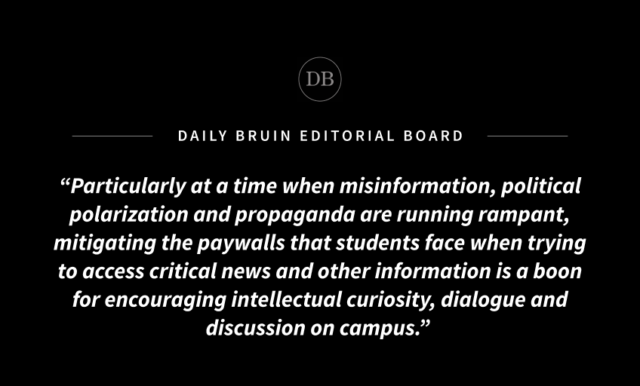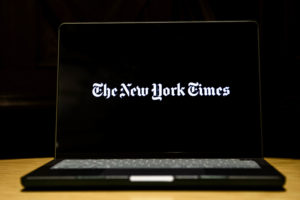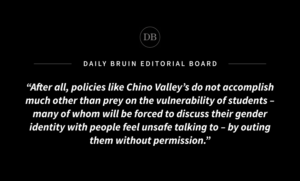This post was updated Oct. 15 at 11:03 p.m.
“All the news that’s fit to print” is now free to peruse for all UCLA students thanks to a new funding program under the Undergraduate Students Association Council.
The initiative to make The New York Times accessible for students for free was engineered by Financial Supports Commissioner Sara Broukhim along with USAC General Representatives Gabby Lasry and Jonathan Valenzuela Mejia, among others.
After nearly two years in the making, USAC made the deal with the Times using about $31,000 of surplus funds to get free subscriptions for more than 32,000 undergraduate students.
Giving UCLA students subscriptions to The New York Times represents a major step in ensuring that Bruins can access reliable news reporting on a variety of topics from one of the country’s most reputable newspapers.
Along with initiatives such as the Bruin U-Pass program that emerged from the transit referendum last year, this effort shows that USAC is having a positive impact on the student community, channeling resources into effective projects that benefit the day-to-day lives of Bruins.
However, because of the use of surplus funding to support the program, there are concerns that access to The New York Times after this year could be put at risk if alternative financing cannot be found.
Students should have the option to permanently fund the Times subscription program through a referendum during this year’s USAC election.
The surplus funds currently used to purchase these subscriptions still come from the fees students pay as part of tuition, and the program’s popularity must be tested democratically should it continue into the fall of 2024 and beyond.
It’s clear that USAC’s deal with the Times is far more cost-effective for students than buying subscriptions individually. The current cost of an individual New York Times All Access subscription is $6.25 per week, although it costs only $1 per week for the first six months. In 2015, the Times announced a new program that allowed college students to subscribe at the $1 per week price beyond the six month limit of the newer All Access deal.
By contrast, USAC secured yearlong subscriptions for students for less than a dollar each.
Particularly at a time when misinformation, political polarization and propaganda are running rampant, mitigating the paywalls students face when trying to access critical news and other information is a boon for encouraging intellectual curiosity, dialogue and discussion on campus.
While the stories The New York Times publishes should be evaluated critically like any other source, its prominence and quality of journalism make the Times a critical resource for undergraduate students of all majors.
USAC officials have asserted that the next steps for this program will be to expand to all students and faculty and potentially reach out to more publications to make similar deals to grant access.
The past few years have also seen a dramatic decline in the number of print newspapers nationally, with many of the largest papers, including The New York Times, announcing layoffs amid a difficult economic climate and growing competition for audience attention in the digital age.
To some extent, then, encouraging more students to engage with traditional news media through programs that mitigate the financial burden of subscription services is a clear step showing support for journalism and its vital role within our information-based society. Social engagement today relies heavily on consistent access to information from trusted sources, and The New York Times is a critical example of the ways in which news reporting can shape the world positively.
This new program from USAC, although perhaps minor in the grand scheme of things, will help make trustworthy news more accessible to students. Despite some of the programs’ flaws, it shows a great deal of promise and can help educate the future generation of leaders who find themselves at UCLA today.





Comments are closed.